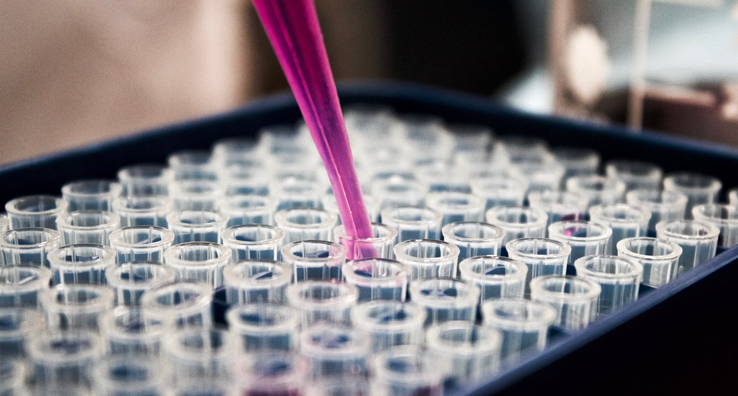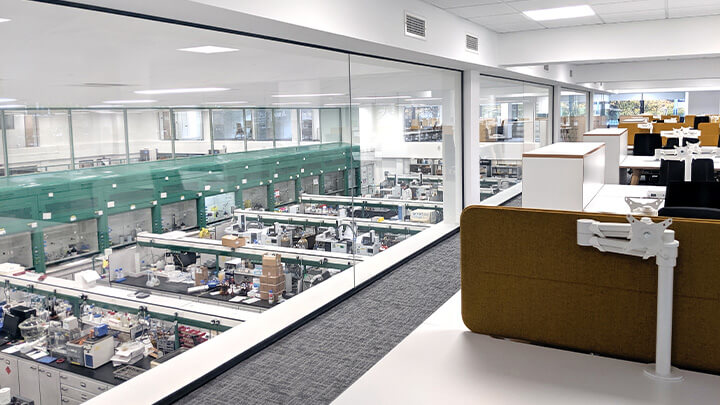Residual solvent (RS) and organic volatile impurities (OVI or VOCs) identification and quantification in pharmaceutical drug substances, excipients and drug products
Residual solvents in drug substances, excipients, and in drug products (also referred to as organic volatile impurities or OVIs) are considered impurities that are not removed during product purification and are possibly left over from the manufacture of active pharmaceutical ingredients (APIs) or drug substances and excipients or the formulation of drug products. They can also possibly be formed during packaging or storage. Drug products should contain no higher levels of residual solvents than can be supported by safety data. Some solvents that are known to cause unacceptable toxicities should be avoided in production of drug substances, excipients, or drug products unless their use can be justified. Control of residual solvents in the finished drug product is therefore required by regulatory agencies worldwide, as they provide no therapeutic benefit and may be harmful.
Many solvents may be used in the manufacture of pharmaceutical materials. The ICH Q3C (R8): Impurities: guideline for residual solvents (legal effective date: 20 November 2021) and USP chapter <467> provide permissible daily exposure (PDE) for some of the commonly used solvents. USP <467> and Ph. Eur. 5.4 provide analytical methods for the analysis of the commonly used solvents. If a solvent other than those listed in the ICH Q3C (R8)) or USP <467> is utilized in the manufacture of a pharmaceutical article then the onus falls on the drug product manufacturer to determine the acceptable PDE and establish a suitable analytical procedure for the control of that solvent.
Our pharmaceutical impurities analysis team provide expert determination and identification of residual solvents, delivered from our GMP compliant laboratories, to help you to ensure that residual solvents have been reduced to acceptable levels in drug products, drug substances and excipients. Often it is prudent to ensure residual solvents are controlled for all excipients and the drug substance(s) to ensure that the finished product will meet the limits specified in ICH Q3C or USP <467> or the limit established by the drug product manufacturer for unique solvent(s).
Our Good Manufacturing Practice (cGMP) laboratories routinely conduct residual solvent testing in accordance with pharmacopoeia methods, in particular USP <467>, and Ph. Eur. (general text 5.4 and general chapter 2.4.24). Additionally, we are also able to develop and validate tailored methods that will meet your specific needs using a range of chromatographic techniques such as headspace-gas-chromatography or gas-chromatography-mass spectrometry (GC-MS). Our pharmaceutical analysis experts conduct residual solvent method validation which conforms to ICH Q2 guidelines on validation of analytical procedures. The accurate and robust data generated for residual solvents can help you to make an appropriate risk-based assessment for your finished drug product(s).
Bringing quality and safety to life, we offer Total Quality Assurance expertise to help you to meet and exceed quality, safety and regulatory standards. As a trusted provider of residual solvents determination, we offer you extensive expertise for pharmaceutical impurity analysis, underpinned by a broad range of analytical techniques to suit your particular needs.

Pharmaceutical News & Events
- Determination of Particles in Pharmaceuticals - Article
- Discover our Audit Live Tool for direct access to our scheduled audits
- Extractables/Leachables Lab Tour - Request access
- Medical Device Extractables & Leachables Studies
- Glycosylation Analytical Approaches for Antibody Therapeutics
- Rapid Determination of Low/Trace Level Benzene in Pharmaceutical Excipients and Finished Products
- mRNA Analytics: Capping Efficiency, Sequencing, Poly-A Tail, dsRNA
Pharmaceutical Services

Intertek Pharmaceutical Services Manchester
P.O. Box 42
Hexagon Tower
Blackley
Manchester, M9 8ZS
United Kingdom
For location use: M9 8GQ
Intertek Pharmaceutical Services
P.O. Box 470
291 Route 22 East
Salem Industrial Park
Whitehouse, NJ 08888
USA
Sample Size and Pricing Guide (PDF)
Download our Pharmaceutical Testing brochure (PDF)
Download our Intertek Pharmaceutical Services Brochure
Download our Custom Extractables and Leachables Solutions Brochure
